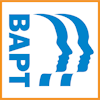Jungian Type is usually explored using the MBTI and other similar questionnaires. (For the basic elements and framework see this page about Jungian type.) Too often, the questionnaire results are taken as definitive, especially in work environments because of time pressures and budget constraints, among other reasons.
is usually explored using the MBTI and other similar questionnaires. (For the basic elements and framework see this page about Jungian type.) Too often, the questionnaire results are taken as definitive, especially in work environments because of time pressures and budget constraints, among other reasons.
However, any questionnaire, on its own, is not fully reliable – they are designed to be done in conjunction with a follow-up clarification session, to help the individual find out their ‘best fit’ type. The more we can understand about our best-fit type, the more it can help us with growth, development, managing stress, understanding and relating to others, and so on.
But Type was never intended to be an additive group of four letters. It is a dynamic theory, and the whole type is so much more than the sum of four letters.
Whole Type is a methodology where multiple complementary models are integrated with the four-letter type code (E/I, S/N, T/F and J/P) to provide more in-depth insight into natural preferences and potential behavours. They add depth and breadth to our understanding of Type.
These complementary lenses are:
- Cognitive Processes, originating from Jung’s Theory of Psychological Type, the Processes reflect WHAT type of information we naturally gravitate towards and what criteria do we then use to make decisions.
- Temperament, a separate yet complementary theory to type described by David Keirsey. Temperament represents a pattern of needs, values, talents and behaviors, and reflects WHY we do what we do, and has four categories that divide the 16 types into four groups.
- Interaction Styles, a separate yet complementary theory articulated by Linda Berens. It is a pattern of physical drives, mental beliefs and innate talents that influence the ways that we interact with others to achieve our goals. Reflects HOW we do what we do, and again divides the 16 types into four groups.
As with the 16 types, all of us can use or ‘flex to’ any of these descriptions, but some will be more like us than others, therefore easy and natural, while others will be more of a stretch and take more out of us when we try to maintain them for long.
This diagram shows the relationship between these different theories.

Cognitive Processes
- Represent the ways we gather information and make decisions.
- There are four Perceiving (Gathering Information) Functions and four Decision Making (Judging) Functions
- Reflect what type of information we naturally gravitate towards and what criteria do we then use to make decisions.
| Function | Description |
| Se: Extraverted Sensing (Experiencing) | Being drawn outward for the immediate, acute uptake and exploration of sensory data from the external world through senses such as sight, sound, touch, taste, and smell. |
| Si: Introverted Sensing (Recalling) | Pulling inward to recall past experiences and compare the present information to a historical data bank of stored sensory data and internal thoughts, feelings, sensations and memories. |
| Ne: Extraverted iNtuiting (Brainstorming) | Being drawn to the outer world for the unrestrained exploration and interpretation of new ideas, patterns and possibilities that are not inherently obvious. |
| Ni: Introverted iNtuiting (Visioning) | Pulling inward for the unconscious correlation of conceptual ideas, possibilities and symbols that enter consciousness as a whole system or idea. |
| Te: Extraverted Thinking (Systematizing) | Making decisions using logical, objective criteria to structure the external world in the most efficient way to achieve the end goal. The output can appear as a structured plan. |
| Ti: Introverted Thinking (Analyzing) | Making decisions where the information gathered is categorized and evaluated against a model using internal logical criteria. The output can appear as a new frame of reference. |
| Fe: Extraverted Feeling (Harmonizing) | Making decisions using subjective criteria to optimize interpersonal harmony considering what is appropriate. The output can appear as a supportive environment. |
| Fi: Introverted Feeling (Valuing) | Making decisions based on subjective internal values and a belief system to support individual differences. The output can appear as a fair and unbiased environment. |
Temperament
- Represents a pattern of needs, values, talents and behaviors described for 25 centuries (Hippocrates, Aristotle, Native North Americans, Keirsey, Myers-Briggs).
- Reflects WHY we do what we do.
Catalyst/Idealist
The Catalyst’s core needs are for the meaning and significance that come from having a sense of purpose and working toward some greater good. They need to have a sense of unique identity. They value unity, self-actualization, and authenticity. Catalysts prefer cooperative interactions with a focus on ethics and morality. They tend to be gifted at unifying diverse peoples and helping individuals realize their potential. They build bridges between people through empathy and clarification of deeper issues. |
Stabilizer/Guardian
|
Theorist /Rational
|
Improviser/Artisan
|
Interaction Style
- Is a pattern of physical drives, mental beliefs and innate talents that influence the ways that we interact with others to achieve our goals.
- Reflects HOW we do what we do
Chart the CourseFocused Energy
|
Behind the ScenesApproachable Energy
|
In ChargeDetermined Energy
|
Get Things GoingExpressive Energy
|
© The Type Academy 2015
Reproduced with permission

